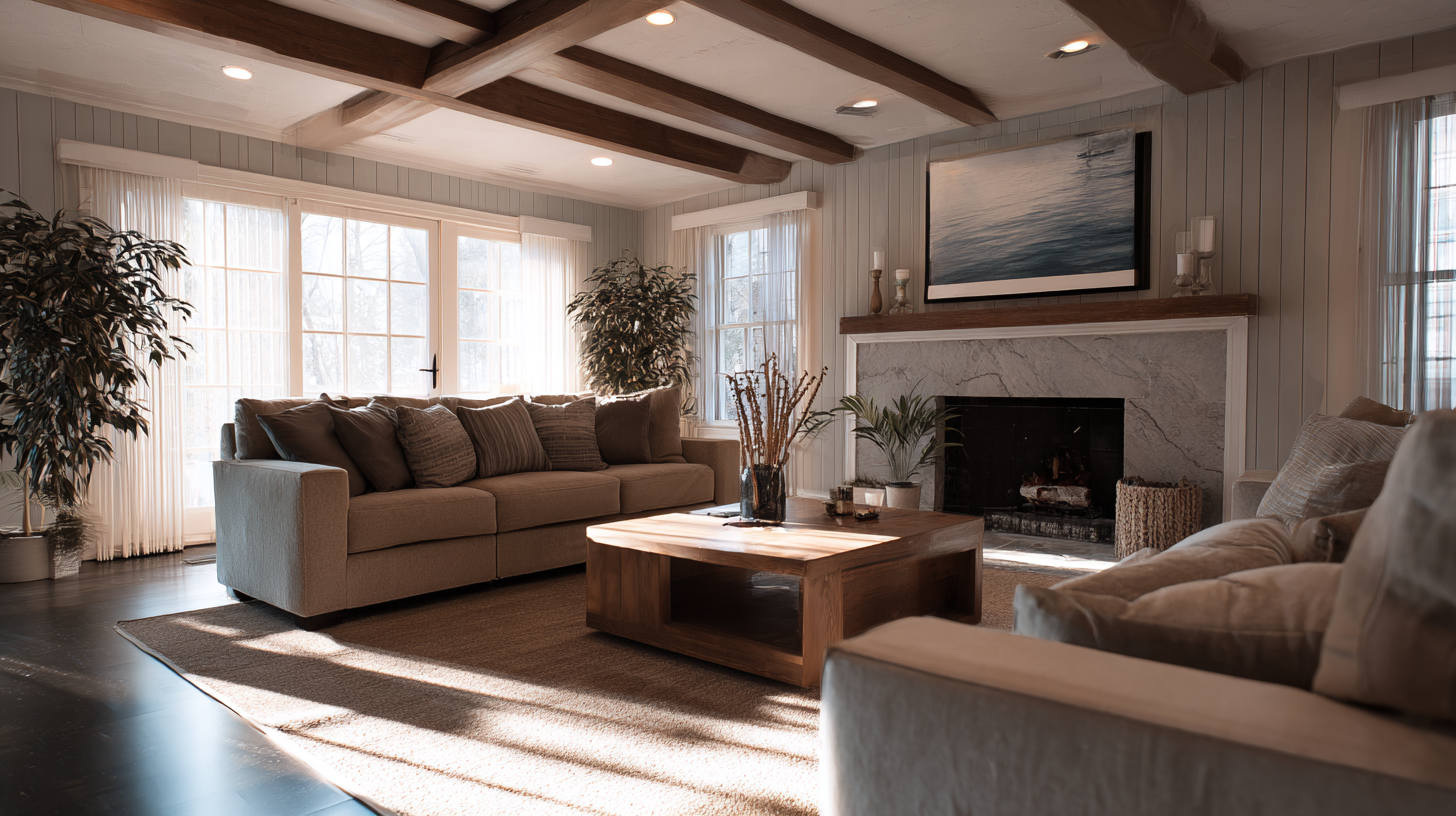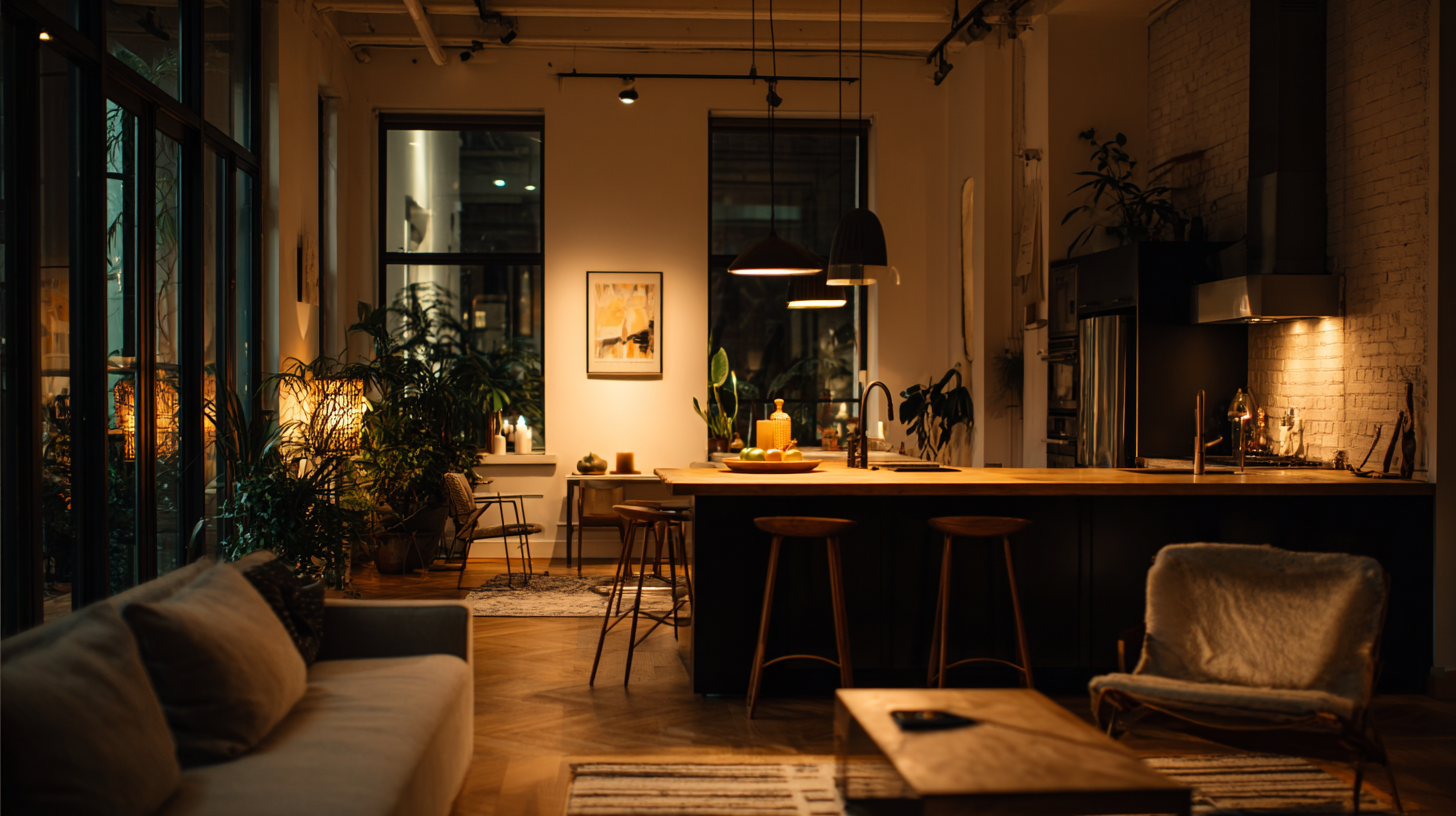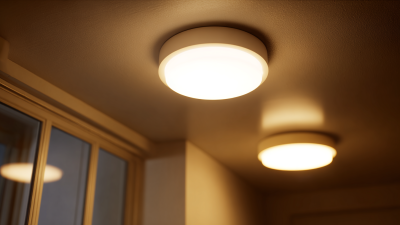Lighting at home is often an overlooked aspect of interior design, yet it plays a crucial role in enhancing aesthetics and functionality. According to a recent report by the Illuminating Engineering Society (IES), effective lighting can increase a home's perceived value by as much as 20%. This statistic underscores the importance of thoughtful lighting choices that not only illuminate spaces but also create mood and ambiance.

Expert Michelle Smith, a renowned lighting designer and author of "Bright Ideas", emphasizes, "Lighting at home is the invisible hand that shapes our experiences and comforts." Her insights highlight the transformative power of lighting, which can elevate a simple room into a welcoming sanctuary or a mundane space into an inspired workplace. In a world where nearly 95% of people have expressed dissatisfaction with their home's lighting, it becomes imperative to explore innovative lighting techniques that cater to both functional and emotional needs.
By understanding the science and art behind effective lighting, homeowners can embrace techniques that make their spaces more inviting and practical. This guide will explore various strategies to illuminate your home effectively, merging style with utility for an optimal living experience.
 Maximizing natural light in your home can significantly enhance the space, making it feel larger and more inviting. One effective strategy is to use lighter colors on walls and furniture. Light shades reflect sunlight more effectively, helping to brighten up any room.
Consider painting walls in pale hues or decorating with light-colored furniture to create an airy atmosphere.
Maximizing natural light in your home can significantly enhance the space, making it feel larger and more inviting. One effective strategy is to use lighter colors on walls and furniture. Light shades reflect sunlight more effectively, helping to brighten up any room.
Consider painting walls in pale hues or decorating with light-colored furniture to create an airy atmosphere.
In addition to paint choices, strategically positioning mirrors can amplify natural light. Placing a mirror opposite a window reflects sunlight and distributes it throughout the room. This technique not only increases brightness but also adds depth and character to your space.
Tips: To further boost natural light, keep windows clean and unobstructed by heavy drapes. Replace thick curtains with sheer fabrics that allow light to filter through while still offering some privacy. Additionally, consider installing skylights or solar tubes to introduce more daylight into darker areas of your home, such as hallways or bathrooms. These enhancements can make a substantial difference in creating a bright, welcoming environment.
Lighting plays a pivotal role in transforming the ambiance of a home, and creative layering of different lighting types is essential for achieving a balanced and inviting atmosphere. Ambient lighting serves as the foundation, providing overall illumination to a room. This can be achieved through overhead fixtures like chandeliers or ceiling-mounted lights, ensuring every corner is softly lit. To enhance the room's functionality, task lighting is strategically placed where activities take place. This includes desk lamps in home offices, under-cabinet lights in kitchens, or reading lamps by cozy chairs, allowing for clear visibility and focus on specific tasks.
Incorporating accent lighting adds a touch of personality and drama to the space. This type of lighting highlights architectural features, art pieces, or plants, creating visual interest and depth. Wall sconces, LED strips, or spotlights can draw attention to these elements, making the room feel dynamic and well-curated. By thoughtfully combining ambient, task, and accent lighting, homeowners can not only enhance the aesthetic appeal but also improve the functionality of their spaces, resulting in a harmonious and inviting environment.
 Choosing the right bulbs is crucial in transforming your home’s ambiance through effective lighting techniques. Color temperature, measured in Kelvin (K), plays a significant role in how a space feels. Warm white bulbs, typically around 2700K to 3000K, create a cozy and inviting atmosphere ideal for living rooms and bedrooms. On the other hand, cool white bulbs, ranging from 3500K to 4100K, offer a more energizing feel perfect for kitchens or workspaces, promoting focus and productivity.
Choosing the right bulbs is crucial in transforming your home’s ambiance through effective lighting techniques. Color temperature, measured in Kelvin (K), plays a significant role in how a space feels. Warm white bulbs, typically around 2700K to 3000K, create a cozy and inviting atmosphere ideal for living rooms and bedrooms. On the other hand, cool white bulbs, ranging from 3500K to 4100K, offer a more energizing feel perfect for kitchens or workspaces, promoting focus and productivity.
Brightness is another essential factor to consider. Measured in lumens, the brightness of a bulb determines how well it illuminates a space. For intimate areas like a dining room, a bulb with lower lumens can create an inviting setting, while brighter bulbs are necessary for functional spaces like bathrooms or garages. By carefully selecting the color temperature and brightness, you can effectively tailor the lighting in your home to enhance both functionality and mood, showcasing the beauty of your space.
With the advancement of technology, smart lighting solutions have revolutionized how we illuminate our homes. These systems allow homeowners to control their lighting through smartphones or voice commands, offering convenience and flexibility. By integrating smart bulbs and fixtures, you can easily adjust brightness, color, and scheduling to create the perfect ambiance for any occasion. This level of control not only enhances comfort but also contributes to energy efficiency, as you can turn off lights remotely or set them to operate only when needed.
Additionally, smart lighting can enhance home security. Automated lighting systems can simulate occupancy, turning lights on and off at designated times, which acts as a deterrent against potential intruders. Furthermore, many smart lighting solutions are compatible with home security systems, allowing for synchronized alerts and responses. As homeowners increasingly embrace technology, investing in smart lighting solutions becomes an essential step in transforming living spaces into modern, efficient, and secure environments.
Lighting plays a crucial role in shaping the ambiance of your home, allowing you to create personalized spaces for different moods and activities. Whether you’re looking to foster a cozy atmosphere for a movie night or spark creativity during work hours, the right lighting can make all the difference. One effective technique is to layer your lighting by combining ambient, task, and accent lights. This approach not only enhances functionality but also adds depth to your decor.
**Tips:** When designing your lighting scheme, consider dimmable LED bulbs. They provide flexibility, enabling you to adjust the brightness based on your activity—brighter for focused tasks and softer for relaxation. Additionally, incorporating smart lighting systems can allow you to control your lights remotely and tailor them to suit your mood instantly.
For specific activities, you might want to use warm white bulbs for cozy evenings or bright white lights for reading and cooking. Positioning accent lights to highlight artwork or architectural features can create a visually appealing focal point, enriching the overall aesthetic of your space. Experimenting with color-changing bulbs can also introduce a dynamic element to your home, making it easy to switch up the vibe whenever you wish.
| Lighting Type | Purpose | Ideal Mood | Best Locations |
|---|---|---|---|
| Ambient Lighting | General illumination for the whole room | Relaxed and Comfortable | Living Room, Bedroom |
| Task Lighting | Focused lighting for specific tasks | Concentrated and Productive | Home Office, Kitchen |
| Accent Lighting | Highlight specific areas or objects | Dramatic and Inviting | Artwork, Architectural Features |
| Mood Lighting | Adjustable lighting for different atmospheres | Warm and Romantic | Dining Room, Bedroom |
| Natural Lighting | Using daylight to illuminate spaces | Fresh and Energetic | Windows, Skylights |





